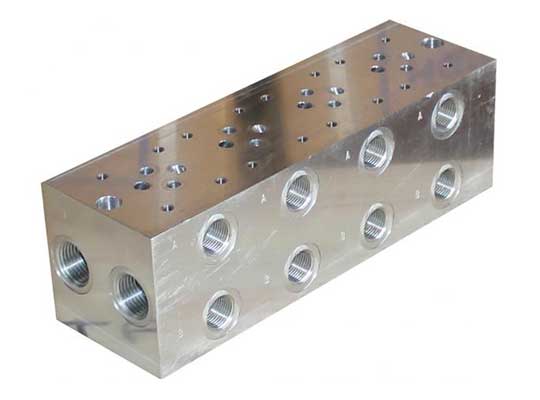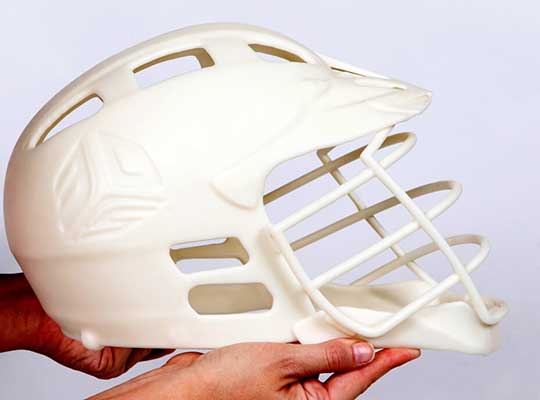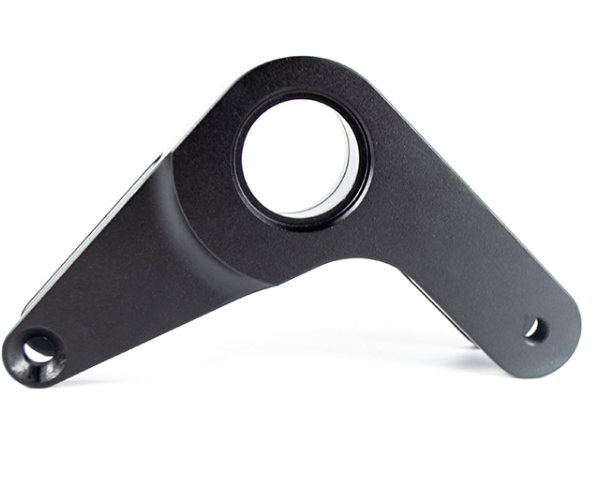Sintering laser selektif (SLS) stands out as one of the most versatile and powerful 3D printing technologies available today. Since its introduction in 1986 by Carl Deckard at the University of Texas, SLS has evolved from an experimental technique to an industrial workhorse capable of producing high-quality parts for everything from rapid prototyping to end-use production. This comprehensive guide explores how SLS technology works, its material capabilities, key advantages and limitations, and diverse applications across industries—providing valuable insights for engineers, pereka, and manufacturing professionals looking to leverage this innovative technology.
Understanding SLS Technology Fundamentals
Pada terasnya, Selective Laser Sintering is a powder bed fusion (PBF) 3D printing process that creates three-dimensional objects by selectively fusing layers of powdered material using a high-power laser. Unlike other 3D printing technologies that require support structures or specific material forms, SLS offers unique advantages that make it particularly valuable for complex designs and functional parts.
The SLS Printing Process Explained
The SLS workflow consists of several distinct stages that work together to transform digital designs into physical objects:
- Preprocessing and Preparation
Before printing begins, a 3D CAD model is sliced into thin layers (typically 0.1–0.2mm thick) using specialized software. The build chamber is then prepared by heating the powdered material to just below its melting point—this crucial step reduces the energy required for sintering and helps prevent warping.
- Layer Deposition and Laser Sintering
A thin layer of powder is spread evenly across the build platform using a counter-rotating roller. A focused CO₂ laser beam scans the powder bed according to the sliced CAD data, selectively heating and fusing the powder particles together. The laser’s power and scan speed are precisely controlled to achieve proper sintering without excessive melting.
- Layer-by-Layer Construction
After completing each layer, the build platform lowers by the thickness of one layer, and a new layer of powder is distributed over the previous layer. This process repeats until the entire part is complete, with each new layer bonding to the one below it.
- Cooling and Post-Processing
Once printing finishes, the part remains in the build chamber to cool slowly, minimizing internal stresses that could cause warping. After cooling, the part is removed from the excess powder, which is then filtered and reused. Optional post-processing steps may include sandblasting, pencelupan, or machining for improved surface finish.
A key advantage of this process is that unsintered powder acts as natural support for overhangs, cavities, and complex geometries, eliminating the need for additional support structures required by other 3D printing technologies like FDM.
How SLS Differs from Other 3D Printing Technologies
SLS occupies a unique position in the 3D printing landscape, with distinct differences from other popular technologies:
| Technology | Key Process Difference | Primary Advantage vs. SLS | Primary Disadvantage vs. SLS |
| FDM | Extrudes molten filament layer by layer | Lower equipment cost; wider material availability | Requires support structures; anisotropic strength |
| SLA | Photopolymerization of liquid resin with UV light | Higher resolution; smoother surface finish | Limited material properties; requires support structures |
| SLM | Fully melts metal powder (vs. sintering) | Denser, stronger metal parts | Higher energy consumption; more waste material |
| MJF | Uses binder and infrared heating | Faster print speeds | Less design freedom; more limited material options |
Unlike FDM, which creates parts with visible layer lines and directional strength, SLS produces parts with more uniform mechanical properties across all axes. Compared to SLA’s smooth but brittle resin parts, SLS components offer superior impact resistance and durability. For metal applications, SLS differs from Selective Laser Melting (SLM) by sintering rather than fully melting particles, resulting in parts with slightly porous structures that offer unique advantages in certain applications.
SLS Materials: Options and Properties
One of SLS’s greatest strengths is its compatibility with a wide range of materials, each offering distinct properties that make them suitable for specific applications. Understanding these materials and their characteristics is essential for successful SLS implementation.
Common SLS Material Categories
SLS materials primarily fall into two main categories, each with unique properties and applications:
1. Rigid Materials
These materials offer strength, ketahanan, dan kestabilan dimensi, making them suitable for structural components:
- Nylon 11 (Polyamide 11)
A bio-based polymer known for excellent impact resistance, fleksibiliti, dan rintangan kimia. Its biocompatibility and low moisture absorption make it ideal for medical applications and parts requiring contact with fluids.
- Nylon 12 (Polyamide 12)
The most widely used SLS material, offering an excellent balance of mechanical properties, including high tensile strength, good impact resistance, dan kestabilan dimensi. Available in various formulations:
- Standard Nylon 12: General-purpose material with well-rounded properties
- Glass-filled Nylon 12: Enhanced stiffness and dimensional stability
- Aluminum-filled Nylon 12: Improved thermal conductivity and rigidity
- Food-grade Nylon 12: Compliant with FDA regulations for food contact
- Polipropilena (Ms)
Offers excellent chemical resistance, low density, and good fatigue resistance. Particularly useful for fluid handling applications and parts requiring flexibility combined with strength.
2. Flexible Materials
These materials provide elasticity and rubber-like properties for applications requiring cushioning or compliance:
- Poliuretana termoplastik (TPU)
A flexible elastomer that combines rubber-like elasticity with plastic processability. Available in various hardness levels (Pantai a), TPU is ideal for gaskets, anjing laut, genggaman, and shock-absorbing components.
- Flexible Nylon Blends
Composite materials that combine nylon’s structural properties with added flexibility, offering better abrasion resistance than pure TPU.
Material Properties Comparison
The following table compares key mechanical properties of common SLS materials to help guide material selection:
| Bahan | Tensile Strength | Elongation at Break | Impact Strength | Hardness | Primary Applications |
| Nylon 11 | 48 MPA | 25% | 4 kJ / | 85 Pantai d | Peranti perubatan, fluid handling |
| Nylon 12 | 50 MPA | 30% | 5 kJ / | 87 Pantai d | General purpose, bahagian berfungsi |
| Glass-filled Nylon 12 | 65 MPA | 5% | 3 kJ / | 90 Pantai d | Structural components, high stiffness |
| TPU (85A) | 25 MPA | 300% | 20 kJ / | 85 Pantai a | Gaskets, anjing laut, flexible components |
| Polipropilena | 35 MPA | 40% | 6 kJ / | 75 Pantai d | Chemical resistant parts, living hinges |
Material selection should consider not only mechanical properties but also environmental factors like temperature resistance, chemical exposure, and UV stability, as well as regulatory requirements for medical or food contact applications.
Advantages of SLS 3D Printing Technology
SLS offers a unique combination of benefits that make it particularly valuable for certain applications, from rapid prototyping to low-volume production. These advantages have established SLS as a preferred technology for many engineering and manufacturing professionals.
Unmatched Design Freedom
One of SLS’s most significant advantages is the design freedom it provides compared to traditional manufacturing methods and other 3D printing technologies:
- No support structures required: The surrounding powder supports overhangs, cavities, and complex geometries, eliminating design constraints related to support removal.
- Complex internal features: Intricate channels, lattices, and hollow structures can be produced without compromising design integrity.
- Consolidation potential: Assemblies of multiple parts can often be printed as single components, reducing assembly time and improving reliability.
- Functional complexity: Organic shapes and topology-optimized designs that minimize weight while maintaining strength are easily achievable.
This design freedom enables engineers to create parts that simply aren’t possible with injection molding or CNC machining, leading to more innovative, efficient product designs.
Superior Mechanical Properties
SLS parts exhibit mechanical characteristics that make them suitable for functional testing and end-use applications:
- Isotropic properties: Unlike FDM parts, which have stronger layer bonding in certain directions, SLS parts offer relatively uniform strength across all axes.
- Nisbah kekuatan-ke-berat yang tinggi: Particularly with lattice structures, SLS produces strong parts with reduced weight.
- Good impact resistance: Nylon-based SLS parts withstand moderate impacts better than many 3D printed alternatives.
- Abrasion resistance: Properly designed SLS components can handle repeated wear in moving applications.
These properties often allow SLS parts to substitute for injection-molded components in low-volume applications, eliminating the need for expensive tooling.
Production Efficiency and Material Usage
SLS offers several efficiency advantages that contribute to its cost-effectiveness:
- Material reuse: Unused powder can be recycled and reused in subsequent prints, reducing material waste.
- No material waste from tooling: Tidak seperti pembuatan tradisional, SLS requires no molds, dies, or fixtures that become obsolete after production runs.
- Bulk printing capability: Multiple parts can be nested in a single build volume, maximizing production efficiency.
- Reduced post-processing: Many SLS parts require minimal finishing compared to other manufacturing methods.
While SLS equipment represents a significant investment, these efficiency factors make it cost-competitive for both prototyping and production applications, especially when producing complex geometries.
Speed and Scalability
For many applications, SLS provides an optimal balance of speed and quality:
- Faster than traditional methods: For complex parts, SLS often delivers components faster than CNC machining or injection molding, especially when tooling creation time is considered.
- No sacrifice of resolution for speed: Unlike some technologies that require trade-offs between speed and quality, SLS maintains consistent resolution across production speeds.
- Scalable production: From single prototypes to hundreds of parts, SLS scales efficiently without the long lead times associated with tooling-based production.
This combination of speed and scalability makes SLS particularly valuable for rapid product development cycles and on-demand manufacturing scenarios.
Limitations and Challenges of SLS Technology
While SLS offers significant advantages, it also presents certain limitations and challenges that users must understand and address to achieve successful outcomes. Awareness of these factors helps in making informed technology choices and optimizing part designs for SLS production.
Surface Finish and Dimensional Accuracy
SLS parts have distinct characteristics that affect their surface quality and precision:
- Rough surface texture: The powder-based process results in a sandpaper-like surface finish (typically 10–50 μm Ra), which may require post-processing for aesthetic or functional purposes.
- Shrinkage issues: Parts can experience 3–4% shrinkage during cooling, which is higher than many other 3D printing technologies. This requires careful compensation in the design phase.
- Dimensional limitations: While generally accurate, SLS parts may have reduced precision compared to SLA or CNC machining, with typical tolerances of ±0.3mm for the first 50mm and ±0.3% beyond that.
- Keliangan: The sintering process creates a slightly porous structure that, while beneficial for dye absorption, may affect liquid or gas tightness without additional sealing.
These factors make SLS less suitable for applications requiring mirror-smooth surfaces or extremely tight tolerances without post-processing.
Material Limitations and Handling
SLS materials present specific challenges that affect process management and application suitability:
- Limited material range: While growing, the SLS material portfolio is narrower than for FDM or injection molding.
- Thermal sensitivity: Many SLS materials have lower heat deflection temperatures than engineering plastics processed through other methods.
- Powder handling hazards: Fine polymer powders can present respiratory risks and require proper handling equipment and safety protocols.
- Storage requirements: Powders absorb moisture, requiring controlled storage conditions to maintain print quality.
- Recycling limitations: While powder can be reused, each recycling cycle may slightly degrade material properties, requiring careful mixture with fresh powder.
These challenges necessitate proper material management systems and may limit certain high-temperature or high-precision applications.
Equipment and Operational Costs
SLS involves significant investment and operational considerations:
- High initial investment: Industrial SLS systems range from \(100,000 to over \)500,000, placing them beyond the reach of many small businesses.
- Facility requirements: The process requires temperature-controlled environments with proper ventilation systems.
- Maintenance demands: Laser systems and powder handling components require regular maintenance by trained technicians.
- Energy consumption: SLS printers consume significant energy for heating the build chamber and powering the laser.
These factors make SLS more economically viable for medium to large production volumes or applications requiring its unique capabilities, rather than simple prototyping needs.
SLS Applications Across Industries
The unique combination of design freedom, material properties, and production capabilities makes SLS suitable for diverse applications across numerous industries. From functional prototypes to end-use parts, SLS technology continues to expand its reach into new manufacturing domains.
Biomedical and Medical Applications
SLS has emerged as a valuable technology in healthcare, offering customization and biocompatibility advantages:
- Custom medical devices: Patient-specific implants, surgical guides, and orthotics that match individual anatomy precisely.
- Dental applications: Custom crowns, bridges, and surgical stents produced from biocompatible materials like medical-grade nylon.
- Tissue engineering scaffolds: Porous structures designed to support cell growth and tissue regeneration, leveraging SLS’s ability to create controlled porosity.
- Pharmaceutical applications: Though less explored than other 3D printing methods, SLS shows promise for personalized drug delivery systems due to its solvent-free process and use of FDA-approved polymers.
In orthopedics, SLS produces titanium and cobalt-chrome implants with porous surfaces that promote bone integration, while dental laboratories use SLS to create accurate, biocompatible restorations that fit perfectly with minimal adjustment.
Aerospace and Automotive Industries
The aerospace and automotive sectors benefit from SLS’s ability to produce lightweight, complex components:
- Lightweight structures: Topology-optimized parts that reduce weight while maintaining strength, meningkatkan kecekapan bahan api.
- Prototaip fungsional: Tahan lama, heat-resistant parts for testing under realistic operating conditions.
- Custom tooling: Jigs, lekapan, and assembly aids tailored to specific manufacturing processes.
- Low-volume production parts: Specialized components for limited production runs or custom vehicles.
Aerospace manufacturers particularly value SLS for producing complex ducting, kurungan, and interior components that reduce aircraft weight without sacrificing performance or safety.
Sports Equipment Manufacturing
SLS enables the creation of high-performance sports gear with personalized features:
- Custom protective equipment: Helmets, pads, and guards designed for individual athletes’ anatomy, improving fit and protection.
- Performance components: Ringan, strong parts for bicycles, tennis rackets, and other equipment where weight and strength are critical.
- Footwear components: Custom midsoles and insoles optimized for comfort and performance based on biomechanical data.
- Grips and handles: Ergonomic designs tailored to specific sports and user preferences.
By combining 3D scanning with SLS production, sports equipment manufacturers can create gear that performs better while reducing injury risk through improved fit.
Industrial and Consumer Products
Beyond specialized applications, SLS serves numerous general manufacturing needs:
- Prototaip fungsional: Tahan lama, accurate prototypes that can undergo mechanical testing.
- Pengeluaran volum rendah: Small-batch manufacturing without tooling investment.
- Custom enclosures and housings: Complex shapes that integrate multiple functions.
- Replacement parts: On-demand production of legacy components that are no longer in production.
Consumer product companies use SLS to quickly iterate designs and bring products to market faster, while industrial firms leverage it for maintenance, repair, and operations (MRO) aplikasi, reducing inventory costs through on-demand production.
SLS Post-Processing Techniques
While SLS parts can often be used directly from the printer, various post-processing techniques can enhance their appearance, prestasi, atau fungsi. Understanding these options allows users to extend SLS capabilities even further.
Surface Enhancement
Improving surface finish is one of the most common post-processing goals for SLS parts:
- Sandblasting: Using abrasive media to smooth surface texture and create a uniform appearance. This process can reduce surface roughness by 50% atau lebih.
- Vapor smoothing: Exposing parts to solvent vapors that slightly melt the surface, creating a smoother finish. Effective for nylon parts but requires proper safety precautions.
- Painting and coating: Applying primers and paints to improve aesthetics and add protective layers. SLS’s porous surface actually improves paint adhesion compared to smoother 3D printing technologies.
- Pencelupan: Immersing parts in hot dye solutions to achieve consistent coloration throughout the material. Nylon parts particularly accept dye well due to their porous structure.
These techniques transform the natural sandpaper-like finish into surfaces suitable for consumer-visible applications or where reduced friction is required.
Mechanical Enhancement
Post-processing can also improve the functional properties of SLS parts:
- Infiltration: Impregnating porous SLS parts with resins, waxes, or other materials to improve strength, 密封性 (sealing properties), or surface finish.
- Heat treatment: Annealing parts to reduce internal stresses and improve dimensional stability, particularly important for parts that will operate at elevated temperatures.
- Insert installation: Adding metal threads, bushings, or other components to enhance functionality, especially for load-bearing applications.
- Machining: Precision CNC machining of critical surfaces or features to achieve tighter tolerances than possible with SLS alone.
These processes extend SLS capabilities into applications requiring higher precision, different material properties, or specialized functionality.




